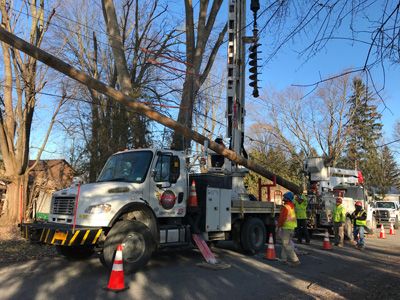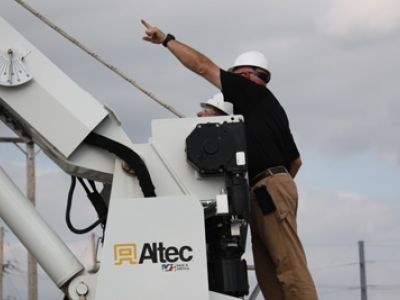
Are You Taxing the Variables?
Planning is a critical part of our work in the electric utility industry. Inevitably there will be unknowns in each plan we put together; the more variables there are, the less control you have over your intended outcomes. So, it’s worth spending the time to identify and address those unknowns. In the remainder of this […]

Collaborating for Safety
One of the most vital responsibilities a utility fleet has to its customers – which typically include operators, field management and corporate management – is to provide vehicles and equipment that meet operational and corporate objectives. Those objectives also must be met without compromising the safety of the operators, other workers or the general public. […]

Arc Flash Considerations for Utility and Construction Activities: Part II
This article concludes a two-part discussion of protection strategies against arc flash and shock hazards. Here you will read about two topics: (1) arc flash and shock hazard labeling for industrial, commercial and generation facility electrical exposures, and (2) methods used to determine the level of PPE required. The previous article (see https://incident-prevention.com/blog/arc-flash-considerations-for-utility-and-construction-activities) mentioned that […]

Aerial Equipment Innovations Aim to Protect Your Workers
Aerial devices have improved exponentially over the last 20 years. Many purchasers and users of the devices, however, are not fully aware of the options now available to them. Technology and innovation – driven by ANSI standards and user collaboration with manufacturers – have resulted in aerial equipment that provides greater functionality and improved safety […]
Train the Trainer 101: FMCSR Awareness
When analysts look at utilities, and to some extent utility contractors, they often see what’s referred to as “mission creep.” That occurs when the expertise of the utility should be focused on quality and continuity of service but begins to be compromised by focus on too many other areas. The opposite of mission creep is […]
Voice of Experience: Human Performance Failures
I find human performance a fascinating topic to teach during my supervisor training classes. Many readers of Incident Prevention are familiar with the topic. For those who aren’t, human performance is an analytical tool that examines how people accomplish tasks and why they perform those tasks in a particular way. Employees in the electric utility […]
February-March 2020 Q&A
Q: Where does OSHA’s switching and lockout/tagout policy draw the distinction between generating plants and the plants’ substations, particularly with metal-clad substations? A: It depends more on the equipment used than a distinct line, and it has to do with OSHA’s intent, equipment design and practicality. Let’s look at this from the perspective of intent. […]
Learning Styles: Implications for a Trainer
When we talk about leadership and human performance, something we stress is that people are equal but never the same. That’s true for how we behave, what motivates us, how we interact with others and what we will do in specific situations. A tenet of leadership is that your leadership style should be based on […]

